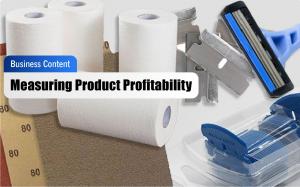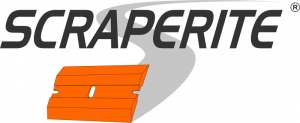Measuring Long Term Value Creation and Product Profitability
Creating shareholder value is probably the primary reasons for most companies to exist, otherwise there is eventually no company and no job.
ORMOND BEACH, FLORIDA, UNITED STATES OF AMERICA, May 4, 2022 /EINPresswire.com/ -- Creating shareholder and stakeholder value is probably the primary reasons for most companies to exist. Without growing value for these two, there is eventually no company and no job. As the company grows so should shareholder value, just like investing in a share of stock. This can also go the other direction if company the executive team and management fail to analyze the business intelligence work to identify duds in the product offering or jewels that could rise to the top.First, let's outline these two key groups.
Shareholder: has a vested interest in the company success and value creation for gain and some type of exit strategy.
Stakeholder: receives value from the product or service which the company offers or benefits indirectly from the company success or going concern. Entities like a vendor who will grow as company sales grow, a reseller of a branded product line, safety or other benefits realized by the product end user, or a patient benefiting from resources, equipment, or services provided. Company staff benefiting from growing salaries, bonuses, and career advancement.
Although the breakdown of profitability for any single product is one of many elements in a company's overall value calculation, it is nonetheless a starting point for analyzing profitability for a company whose primary source of revenue is selling products. The exercise helps identify which products in the lineup are actually profitable and which ones cost more than they're worth and should be discontinued.
Product profitability is often thought about in simple terms of gross margin – the difference between how much is paid to acquire the product and how much is collected when it's sold. Things like procurement costs, cost of sales, product management, and customer service are often pushed into other portions of the P&L or overlooked altogether. Looking at product level profitability tries to break down the various direct costs and considers a product's long term value to the company.
The outline below tries to list all the details to be considered when analyzing a product for long term value and profitability.
Customer acquisition cost
• Marketing
• Online presence
• Social media
• Product presentation
Other Costs of Sales
• Sales commissions
• Sales salaries
• IT Salaries
• Cost of A/R
• Promotional marketing
Cost of Operations
• Customer service
• Bookkeeping
• Sourcing personnel and systems
• General infrastructure
• Management
• Receiving and quality control
• Warehousing
• Picking and packing
• Dispatch and tracking
• Returns and restocking
Gross Margin
• Cost v. Selling price
• Competitive pricing
Acquisition costs
• Effective sourcing
• Supply chain staff
• Transportation
• Cost of cash
Competitive landscape
• Competitive products
• Market saturation
• Market demand
Long term value creation
• Percent of repeat customers
• Annual inventory turns
• Y/Y cost reductions
• Product consumption
• Customer relationship lifetime period
• Brand representation
• Protected territory
• Special brand sponsored programs
• Participation in brand growth
• Shareholder value
Focusing on the details of product level costs, and the value each one brings to the organization, aims to increases margins and root out opportunities to create more efficient workflow processes. This exercise should also help identify products that can achieve long term value by lowering average customer acquisition costs through repeat business over the lifetime of the relationship – characteristics typical of consumable products like sandpaper and paper products. These elements also reduce long term cost of operations and increased process efficiency by eliminating repeated sourcing costs, active product management, and customer notifications.
Branded products further reduce risk of quality and performance failures which lead to added costs of damage control and customer relationship management. They also tend to lead in innovation of design and features sought by their buyers, keeping ahead of competitors. Gaining brand representation with protected territory further protects the company's investment in developing sales while also participating in the brand's growth and marketing – a benefit similar to securing a franchise but without the costs or obligations. Another key benefit is pricing power enjoyed by leaders in the space or category.
Some of the most successful businesses creating strong shareholder value are continually improve with cautious selection of new products while attentively analyzing current products and services looking for efficiencies in process or product management. Keeping up with competition is paramount if a company is to survive in today's fast paced online environment. Making the company successful starts with selecting profitable products.
Read more about this topic at https://scraperite.com/company/blog/secrets-for-creating-long-term-shareholder-value
Christopher Branden
Scraperite North America
+1 386-673-6771
email us here
Visit us on social media:
Facebook
Twitter
LinkedIn
Legal Disclaimer:
EIN Presswire provides this news content "as is" without warranty of any kind. We do not accept any responsibility or liability for the accuracy, content, images, videos, licenses, completeness, legality, or reliability of the information contained in this article. If you have any complaints or copyright issues related to this article, kindly contact the author above.


